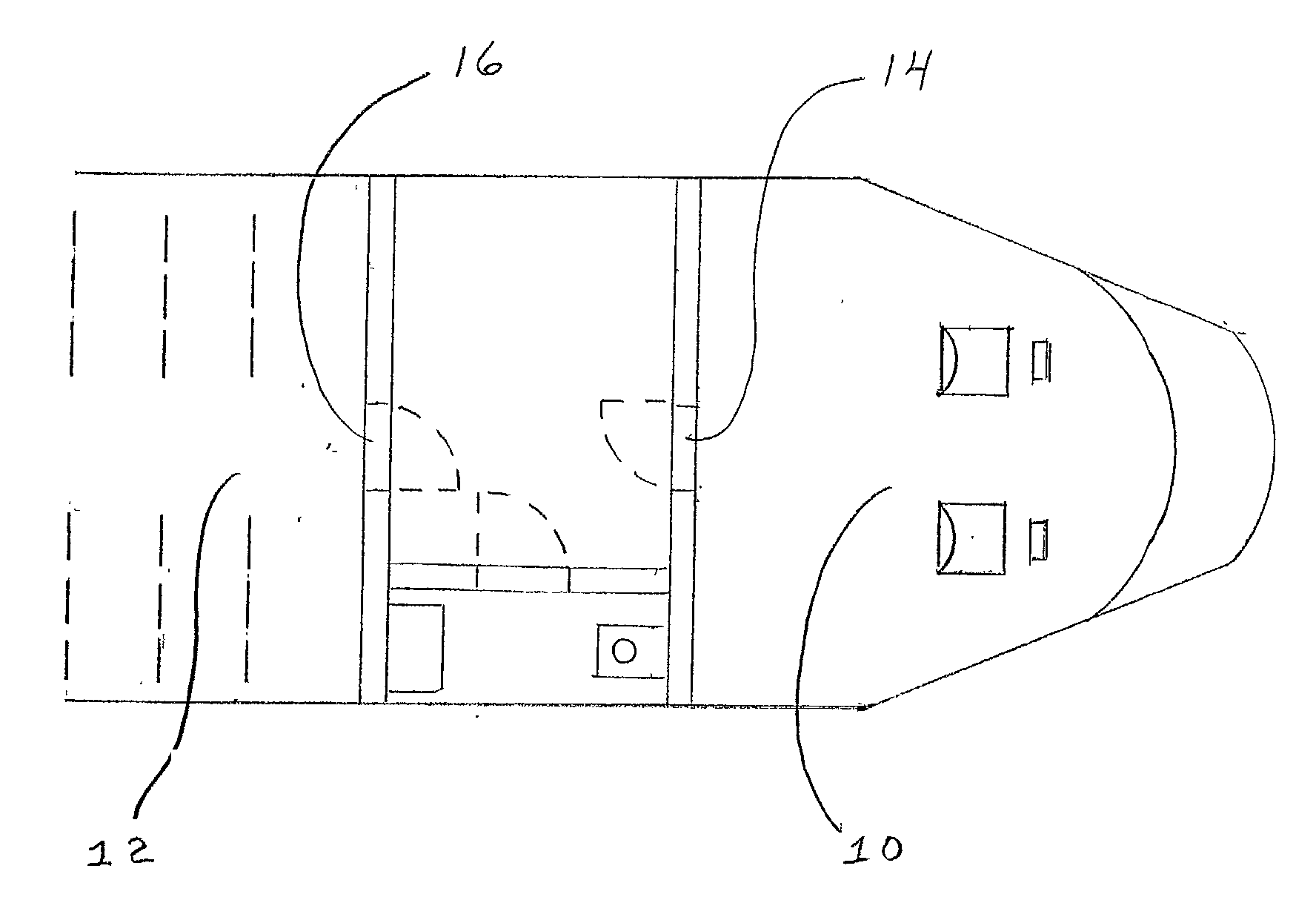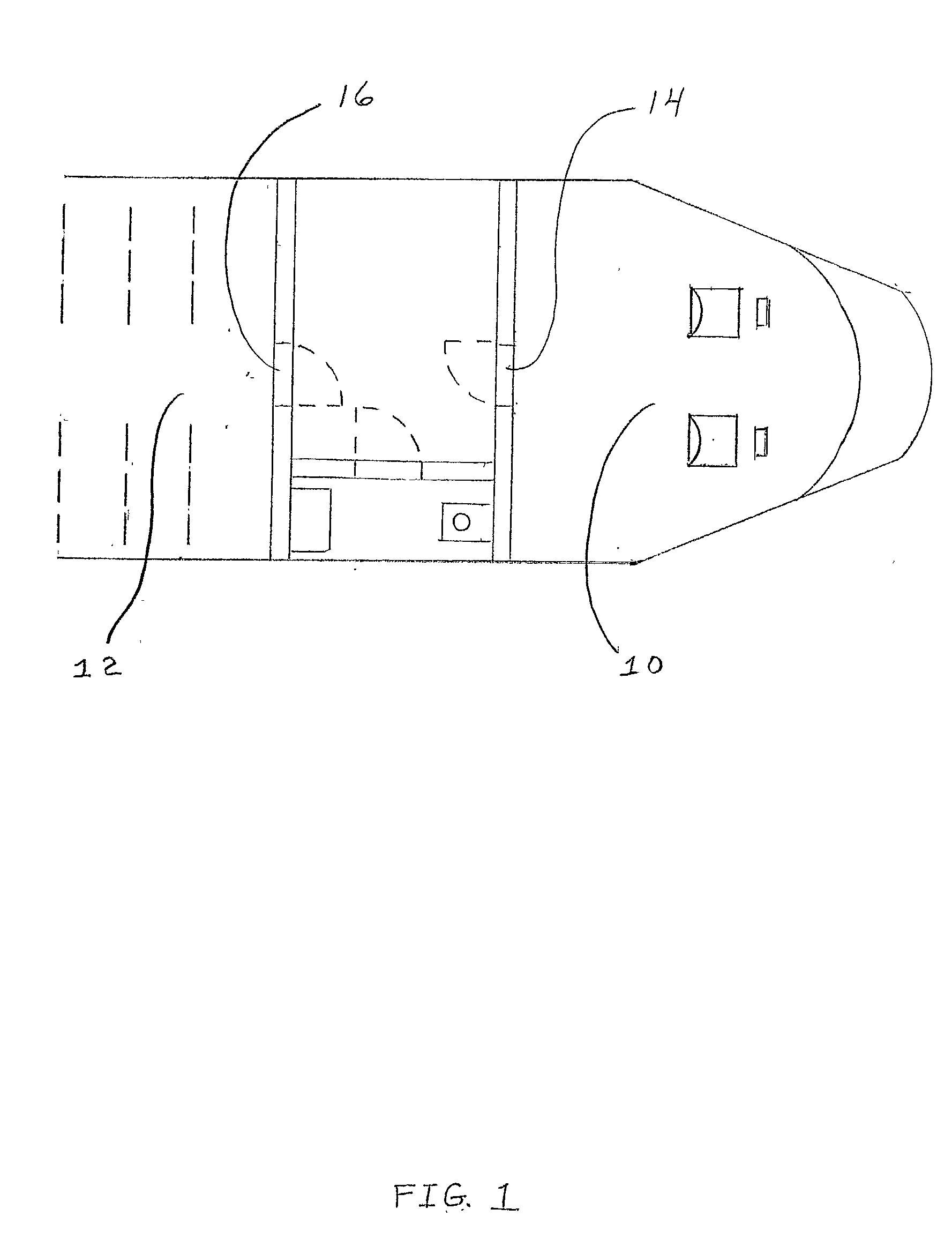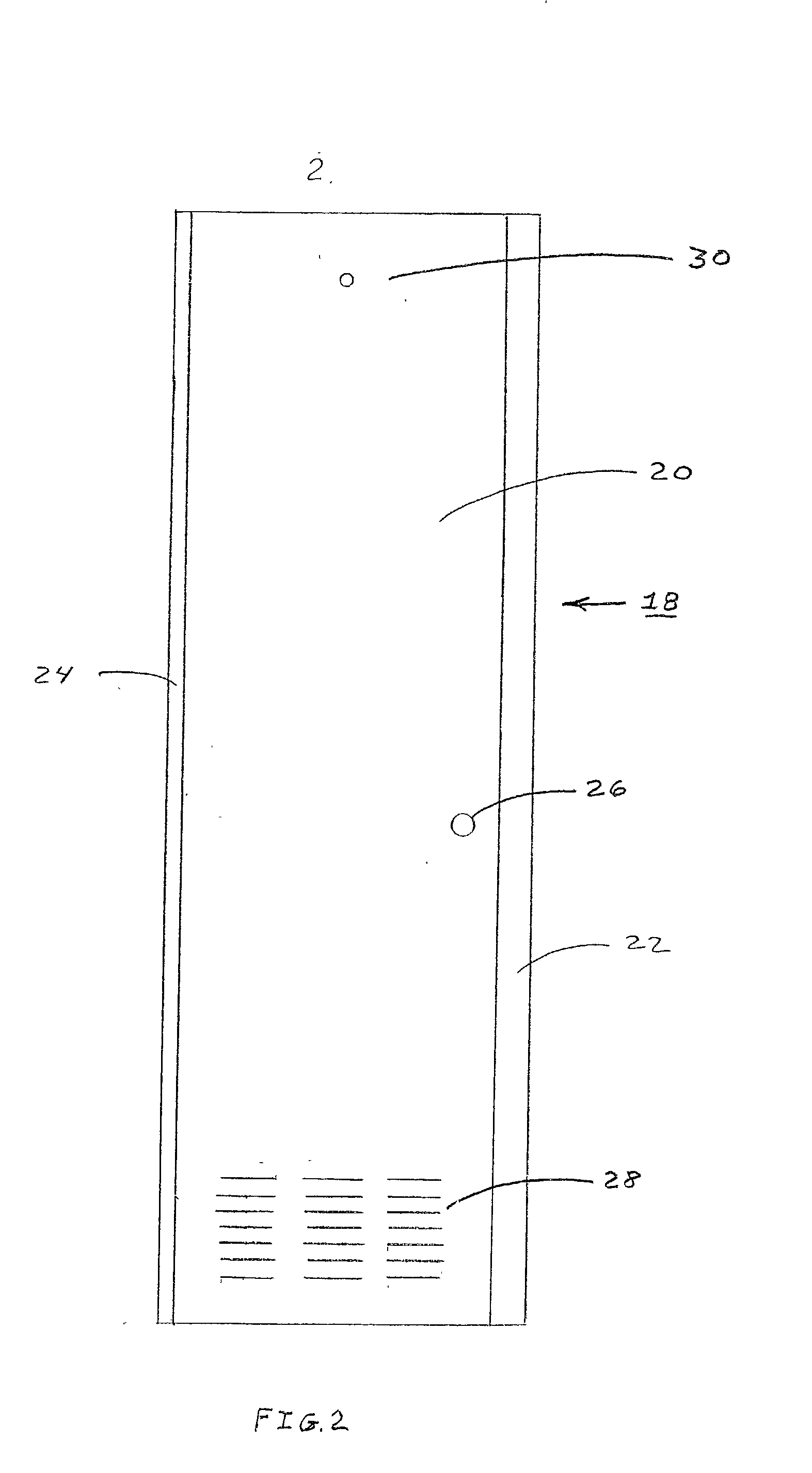Protective shield for aircraft cockpit crew
a cockpit crew and protective shield technology, applied in the field of aircraft technology, can solve the problems of not meeting faa regulations, requiring storming of a building that contains potentially dangerous personnel, and inability to provide a level of protection to the crew operating the aircraft,
- Summary
- Abstract
- Description
- Claims
- Application Information
AI Technical Summary
Benefits of technology
Problems solved by technology
Method used
Image
Examples
second embodiment
[0095] the Protective Shield for Aircraft Cockpit Crew, a bi-fold hinged panel door, is readily achieved for a flight deck entranceway. Like components of the referenced bi-fold panel hinged door are comprised of all the aforementioned components with the exception of component number 18 and 32 (the door itself), a protective T-channel is located at the bi-fold's joint, and a slight modification to the decompression panel assemblage. Those skilled in the art will readily see the ease with which the single panel door description previously provided can be readily modified as follows to achieve the desire configuration.
[0096] Shown in FIG. 9 is the protective bi-fold door 98 as viewed from the cabin. A protective T-channel is secured on two of its sides to on the inboard panel (nearest the hinges) of the bi-fold door. By installing this protective T-channel, the joint interface of the bi-fold door is protected when the door is in the closed position and has a smooth transition on the ...
third embodiment
[0100] Referring now to FIG. 12, a third embodiment for the Protective Shield for Aircraft Cockpit Crew 18 is shown with the door being comprised of a roll-type panel embodiment 110 as viewed from the cabin. This protective shield system comprises a generally light-weight rectangular section of size corresponding to the aircraft cockpit's entranceway. This rectangular section can be comprised of a single panel of suitable thickness that is unrolled vertically into a closed position. The protective door is manufactured with composite materials such as "Spectra" or "Gold" or Kevlar" (or the patent pending material known as "TelAir") and is processed such that a flexible panel results. The door is relatively stiff and has a rigid leading edge, yet is flexible enough to be rolled upon itself when it is uncoiled or recoiled during operation. The door 110 is slid from to side to side to achieve either a closed or open position.
[0101] Surrounding the protective door 110 is a strengthened d...
PUM
 Login to View More
Login to View More Abstract
Description
Claims
Application Information
 Login to View More
Login to View More - R&D
- Intellectual Property
- Life Sciences
- Materials
- Tech Scout
- Unparalleled Data Quality
- Higher Quality Content
- 60% Fewer Hallucinations
Browse by: Latest US Patents, China's latest patents, Technical Efficacy Thesaurus, Application Domain, Technology Topic, Popular Technical Reports.
© 2025 PatSnap. All rights reserved.Legal|Privacy policy|Modern Slavery Act Transparency Statement|Sitemap|About US| Contact US: help@patsnap.com



